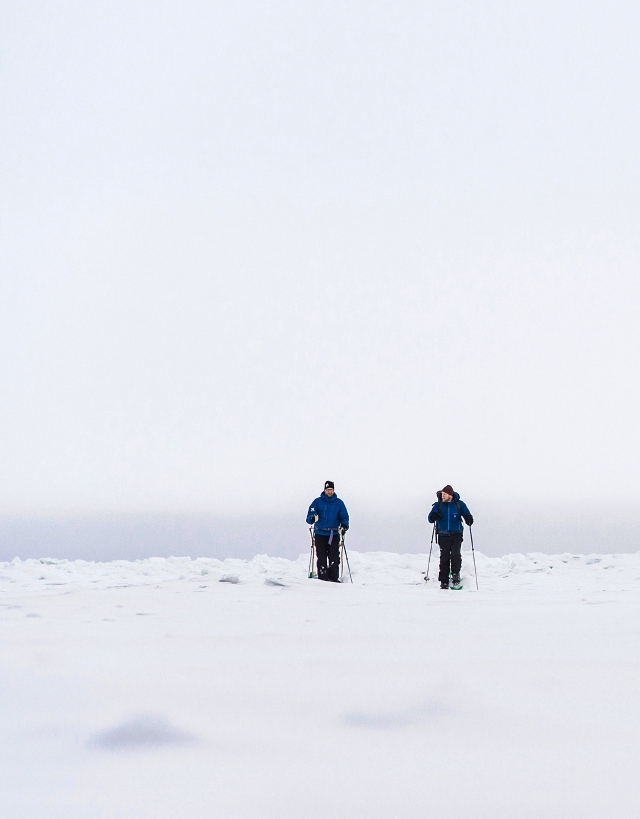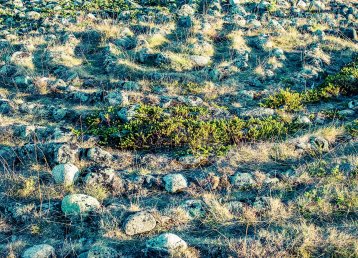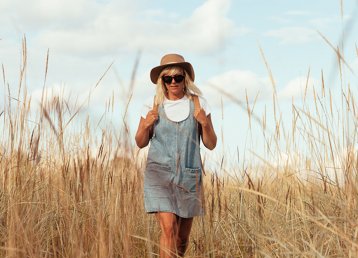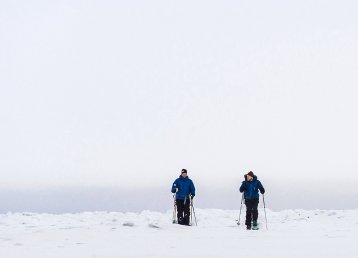Don’t let’s anticipate here, but I can tell you that the whole idea of going island hopping in the Bothnian Bay archipelago wasn’t exactly my son’s idea. It was mine. It was based on that ancient proverb: “like father, like son”. The thought that the apple doesn’t fall far from the tree and that they – Sr. and Jr. – should do stuff together. And then preferably the way Sr. used to do them, back at the beginning of time.
“Will there be an internet connection?” was my son’s immediate response when I brought up the holiday plans at the breakfast table. Based on the experience he’d had a week or so ago when we went to the mountains, and the signal bars were conspicuous by their absence, I suppose he wanted to cover himself. He wants to bring a friend as well. Sometimes a father keen on spending time with his teenage son just has to accept the fact that the game plan has changed through the years. The kid has his own will – and that will is better to have with you than against you.
Life in the archipelago
On Wednesday night, we took a cruise with M/S Symfoni out to Hindersön island. We leave Luleå harbour at 17:15. At 19:00, we have checked in. And ordered food. Already on the table is a beer for dad and Coke for Måns and his friend Edvin. It’s all go at Jopikgården this evening. It’s a folk singer event, and we find ourselves enjoying one of the nicest summer evenings of the year. This means that plenty of people have arrived, this being the island’s centre. Sometimes that’s all it takes for us to leave our safe nests – a bit of sun and an opportunity for a beer with mates. We have toast with goat’s cheese and blueberry honey as a starter. The boys opt for a schnitzel filled with smoked reindeer suovas, and I have the fish cakes. No one is disappointed. And afterwards, while Måns and Edvin take their rental bikes out for an adventure, mapping the island, I stay seated and enjoy a calvados. It’s life in the archipelago, after all.
The ultimate paradise
The next day we head towards Brändöskär islet. It used to be summer pasture and fishing camp for people living on Brändö island. Nowadays it’s a summer paradise as far out as you can get in Luleå’s archipelago. We stay in one of five rental cottages that Luleå municipality run on Brändöskär. It’s basic and comfortable. The cottage easily houses four people in bunk beds. I make a mental note that next year, as soon as the cottages are available for rent, I’ll try to be quicker and book a couple of nights at least. A gas stove, beds, outside toilet and a pump where we get our water. We’ve got all we need and more.
— Dad, I’ve got two 4G signal bars on top of the stone next to the porch.
In other words, everything is peace and quiet. But I’m sure it would have been anyway: the sun is shining from a blue sky, and the rock outcrops north of our camp are warm and inviting. We dive straight out into the sea when it gets too hot. Sometimes you feel like a piece of meat on a stone slab. It’s absolutely fantastic. Later, I sat in the office trying to sort out the first working days of the year; these are the days I reminisce about. Warm, smooth rock against my skin and that sensation when your feet leave the cliffs, and you’re diving straight down into the sea. Freedom, that refreshing feeling, and a life lived as it should be.
The closest paradise
If Brändöskär is the ultimate paradise, then perhaps Klubbviken Havsbad is the closest. Transfer boats leave Luleå in the mornings and evenings throughout the summer. But bigger tour boats also make a stop at Klubbviken. It’s not only a place to bask in the sun, relax and swim in the sea during the day; you can stay the night as well. If you do, you’ll notice what a difference there is between night and day. Klubbviken transforms from a lively playa under the sun into an intimate little ’archipelago island’ for you and your loved ones once the last tour boat has left. This evening, we eat a tender entrecote steak at the restaurant, and afterwards, we fall asleep in one of the rental cottages available at Klubbviken. It’s easy to go to sleep tonight again.
Island hopping
Island hopping became popular in the Greek archipelago during the 70s. In the Stockholm archipelago, people have been island hopping for decades. But I’m not convinced the experience is the same as this. Where do you get sunshine and daylight 24 hours a day? To go for a swim in the sea in the middle of the night when it’s as bright as during the day is an exceptional feeling. And you’ve got so much time to do things thanks to the extra light and hours. We wake up the next morning, ready for a new adventure.
After breakfast, we head out to Junkön island and the Salmon Run. It’s a trail run on Junkön that attracts many good runners because of the great prizes: Kalix löjrom (vendace roe), smoked whitefish and salmon prepared in many different ways. But mostly, the Salmon Run is a feast of suffering, the feast part being the main one. After the runners have made it around the 6.2 km long trail, with many stretches featuring loose sand, a barbeque and a cold beer await most participants. And yes, even if I’m not participating as such, I think I can enjoy the party. It’s holiday time in the archipelago, after all.
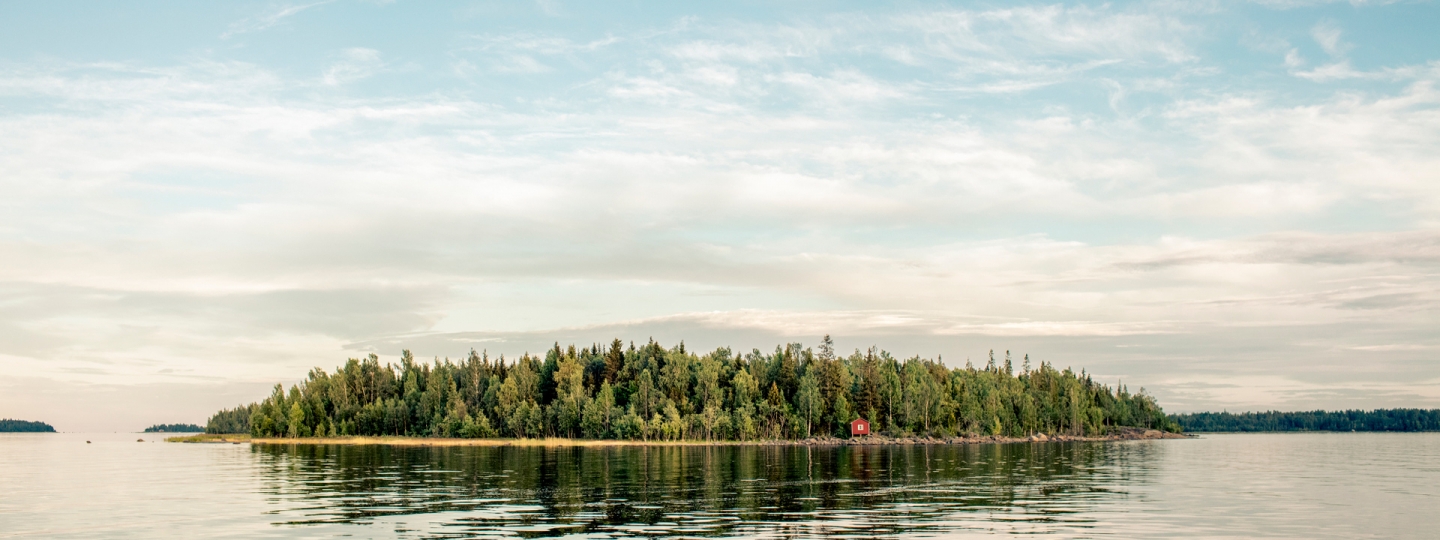
10 islands to visit
Did you know that just the archipelago outside Luleå is made up of 1,312 islands? We've listed 10 islands to visit in Swedish Lapland in the summer. Many of them can be reached by scheduled boat tours. Read more.
Staying overnight
Luleå archipelago
Only in the Luleå archipelago, there are 1,312 islands. Archipelago cottages are available for rent at Kluntarna, Brändöskär, Junkön and Småskär. During the season, there are hosts on many of the islands. Near the cottages, you will find firewood, campfire sites and propane refrigerators. We recommend bringing blankets, sheets, a lighter, toilet paper, drinking water and food, as well as a flashlight if you’re staying here in late summer. For more information, visit visitlulea.se.
At Brändöskär, you find yourself in the outer rim of the archipelago. Here, the boatsheds and the fisher cabins lie close to your cottage. Step inside the island’s unique fisher’s chapel from the 18th century. Look out over the open sea, stretching towards the horizon. Brändöskär brings a feeling of freedom.
At Småskär, a natural, barren archipelagic environment mingles with old-growth forest. Take a walk to the western side and have the island all to yourself. The lagoon between Småskär and Finnskär is something quite out of the ordinary.
Kluntarna is a favourite amongst families with children. The archipelago cottage lies in the middle of the cosy fishing camp with small red cottages, but the uninhabited parts of the island are close by. Walking paths will take you through shifting natural environments and across rugged terrain. Having fine, natural sandy beaches to yourself is a true luxury. Discover one of the peculiar stone labyrinths on the island, built in the 14th century. If you would like to get even closer to nature, you can go ‘wild camping’.
At Stora Junkön, you can enjoy more comfortable accommodation and running water. The cottages are beautifully situated by the harbour inlet. Walk across picturesque footbridges and visit the windmill, several centuries old.
Hindersön is one of the larger islands in the Luleå archipelago. You can get here by tour boat, and you stay overnight comfortably at Jopikgården. For more information and booking, visit Luleå Archipelago.
Piteå archipelago
In the Piteå archipelago, you will find about 550 islands. There are rest and overnight cabins, saunas, jetties, and lovely beaches on several of the islands. Their different characters also offer various flora, exciting stories, cultural environments and relics from the past. For more information, visit lulea.se Piteå Tourist Center. For those who want to rent one of the overnight cabins and need a boat transfer, it is possible to book this when making the cabin reservation.
Baggen is one of the more popular islands in the Piteå archipelago. On Baggen, you’ll find overnight cabins, boat dock, barbecue areas, outdoor chapel and a whole lot of hiking trails to explore. The high, steep cliffs and the intermediate coves on the southwest side of the island are well suited for swimming. The island’s four overnight cabins are cosily located a bit up on the beach with the forest just behind. For those who are interested in mushroom and berry picking, Baggen is an excellent alternative.
Vargön is a nature reserve located in Piteå’s inner archipelago. The island is a popular excursion destination for those interested in nature as it largely consists of species-rich natural forests. There is an open rest cabin with a permanent exhibition and paved trails that take you around the island in the area. There are two overnight cabins, jetty, walking trails and fine sandy beaches to explore. For those who rent an overnight cabin, there is also a wood-fired sauna available.
Stor-Räbben is located by the ancient fishing village at the far end of the Piteå archipelago. There is a lot to discover here if you choose to walk along with the island’s nature and cultural trail. It takes a couple of hours to walk and offers ancient settlements, labyrinths, cobblestone fields, fishing camps, dunes and cliffs. The newly built overnight cabin, which can be rented during summer, lies in the historic fishing village.
Mellerstön is one of the largest islands in the Piteå archipelago. On the island, there is a nice overnight cabin right next to the water with magnificent views. There is a barbecue area, a large terrace and access to a wood-fired sauna. Mellerstön also is a great place for berry and mushroom picking.
Haparanda archipelago
Haparanda Sandskär, in the northernmost part of the Bothnian Bay archipelago, is a paradise with its long beaches. And an ornithological melting pot, as this is perhaps the most exciting variety of birds in all of Swedish Lapland. There are also cottages for rent. For more information and booking, see innala.se .
Kalix archipelago
Malören is a nature reserve located at the far end of the Bothnian Bay archipelago, about 30 km straight out to sea from Kalix. From the sky, Malören looks almost like a South Sea atoll, but instead of sand and mangroves, globular stones and beach rye connect this “atoll”. Malör is an old word for round stones, and when you walk around the island, you will definitely understand what it means. Most of the island is boulder-ridge, but there is a lovely sandy beach on the northeast side of the island. At Malören, you can stay comfortably at Malören Lodge. For more information and booking, see maloren.se .
Getskär/Renskär is part of Likskärs nature reserve in the Kalix archipelago. Here you’ll find stone labyrinths and remains from old fishing cottages. In Getskärsviken, you will find a nice sandy beach. And near the guest harbour on the island is a cottage for rent. For more information and booking, see bottenviken.se .
Skellefteå archipelago
Pite-Rönnskär is perhaps the most iconic island in the entire archipelago of the Bothnian Bay. This island has it all. The small red cottages that are the archipelago idyll’s very image, a well-preserved and picturesque small fishing village, a lighthouse, a chapel, a hostel with a café and a large portion of archipelago tranquillity. For more information and booking, see kinnbackskargard.se .




















